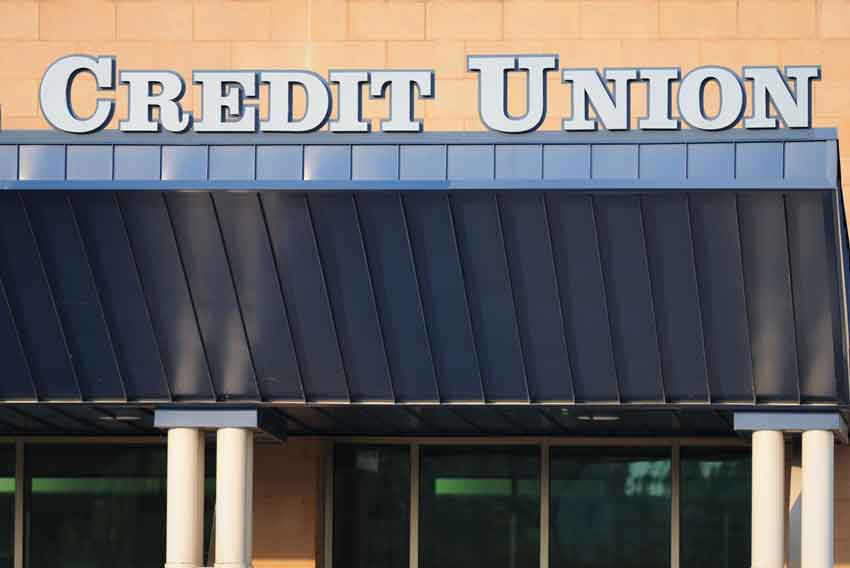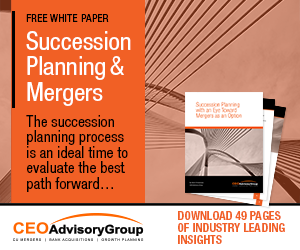Credit Union Mergers & Real Estate Due Diligence
Real estate holdings and leases are a big component in credit union mergers and can be one of the key advantages. For example, most institutions consider three to five years a reasonable time to reach break-even in a new branch facility. If a branch and its members are acquired through a merger, break-even is often immediate in terms of supporting revenue. And, the acquiring credit union does not need to incur $150 to $300 per member for acquisition.
Over the past 30 years I have worked with a number of banks and credit unions through the merger process. While real estate can be an advantage, it can also cause problems that can diminish the value of the merger. Following are a few issues that should be addressed during due diligence.
Two headquarters buildings seem inevitable in a merger. Most credit unions find consolidation of staff necessary to maximize efficiency, productivity and cultural integration. This leaves a building that is much larger than needed to support a branch. If the building is in good condition and well placed in the market (easy access for employees, safe neighborhood and adjacent amenities) it can be used for some departments such as Call Centers, Indirect Lending or a Mortgage Center. If not, it can be sold and the branch leased back or relocated.
In some cases, the real estate can become a big burden. The acquired branch network may significantly overlap with the acquirer’s, requiring re configuring the entire network over time to maximize efficiency and performance. Some branches may be unionized while others are not making consistent management difficult. Headquarters facilities can cause an additional issue. A few years ago, I worked with a credit union whose exiting CEO built an over-sized building in a bad location and 50% over the size needed for the next 20 years. The cost was over $13 million and the value about $7 million and no income generation on vacant space. This is a negative asset in merger talks.
Deferred maintenance can be a big surprise. Last year I worked with a credit union that purchased a new HQ building. The realtor told them a new roof would cost $150,000. The real cost was $450,000. When a credit union is having financial trouble deferred maintenance seems to follow. Due diligence should include a review of deferred maintenance as it can be a costly systemic issue.
Most credit unions own their headquarters because operating costs are much lower over time. But, many credit unions are moving to smaller branches in leased space. Merger due diligence should include a lease audit to understand termination dates, options, restrictions such as no exterior ATMs in a mall or building, operating times, parking, neighbors, signage, market evolution, performance and capital improvement requirements. Also, many leases include a clause that require owners approval prior to changing the name of the business.
A few clients have made the mistake of building their headquarters or branches on leased land. It is critical to know the lease terms and understand the impact of owning a building that has little to no value at the end of the lease.
Delivering a strong and differentiating brand experience is critical to success both branches and headquarters. All facilities must support living the brand experience for members and staff. While acquired branches may provide utility, they are never on brand. We create space and space creates us. Acquired branches should be audited prior to a merger so that steps can be taken to apply the acquiring credit union’s brand on every facility. Cultural development and alignment will happen much quicker if the space people work in delivers a unifying brand image and experience.
Facilities acquisition can be one of the great advantages of a merger. Savvy and unbiased due diligence can mean the difference between ho hum performance and accelerated target growth.
Guest Article: Paul Seibert is a nationally recognized strategic occupancy and branch network optimization consultant. He managed facilities for two national banks, designed over 3.5 million square feet of operations space and 1,800 branches, written six books and over 70 articles and built a national design and planning firm. He now works as an independent consultant to credit union CEOs and boards. paul@paulseibertconsulting.com

 CEO Advisory Group
CEO Advisory Group
